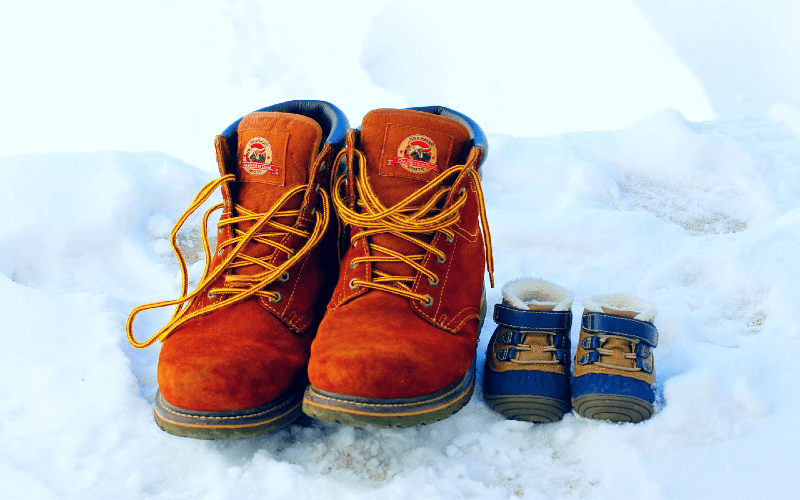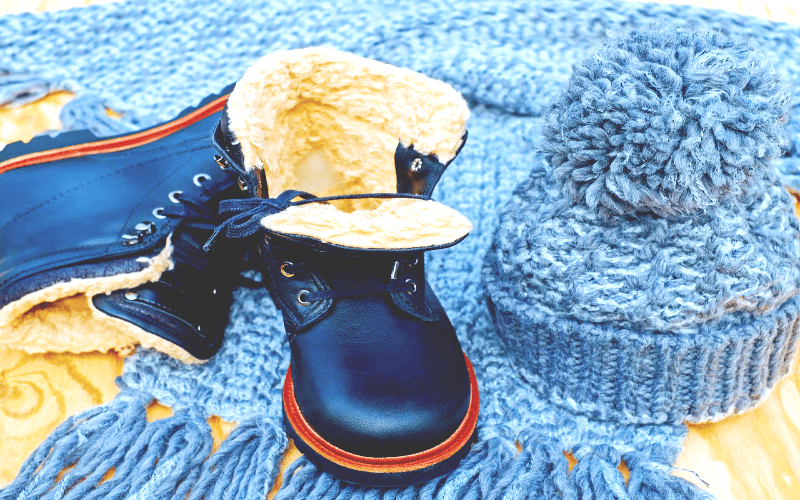Tips For Dressing Appropriately In The Winter ||Winter Clothes||
How should you dress in winter? What are the essential items to protect yourself from the cold? What does it mean to dress in layers? What materials are the best to conserve body heat?
Tips dress appropriately during winter
The previous sequence includes only a part of the many questions that the immigrant asks himself when he first faces the winter cold. Hence, we will respond to them below.
In Canada and certain regions of the United States, where shallow temperatures and prolonged snowfall characterize the dreaded winter, dressing appropriately is essential to maintain health and carry out the routines of daily life.
Live in winter
Of course, you can go out in winter! It is also advisable to do so. You need to protect yourself from the cold with the correct clothing. Thus, outdoor recreation will provide a unique enjoyment: playing sports, walking around the city, going shopping or only getting ready to take the fresh air.
The following tips will help you understand the dynamics of dressing appropriately to ward off the cold and enjoy winter:
Wear layers of clothing in the winter
The golden tip for going out warm and functional during winter is to layer your clothes. With this technique, cold and humidity are controlled, and body heat is preserved.
In general, three coats are recommended, depending on the task to be carried out and the outside temperature. If a few items are carried, the body cools down immediately. If you wear too many clothes, you sweat so much that your clothes get wet and you even catch a cold.
This same procedure applies to children, who usually do not know how to deal with the feeling of cold and do not express spontaneously if they need to be warmer. It is, then, the responsibility of adults to frequently monitor the body heat of the little ones and the humidity of the clothes, to adjust the layers most conveniently.
It is advisable to distribute the layers of clothing in the following order
First layer: it is tight to the body, imitating a second skin, and consists of a shirt with long sleeves and long pants. Its function, absorb moisture and keep skin dry and warm.
Natural fibers (wool and merino) are ideal—also synthetic ones, such as polyester or certain types of high-tech plastic membranes. Cotton is not recommended as it moistens and cools the skin.
Second layer: conserves body heat, isolating the moisture it absorbs from the first layer and sending it to the outer layer.
The garments are worn a little looser than those of the first layer, and they must have windbreaker quality and, in their preparation, synthetic fibers are highly recommended, among which stands out the “Polar Fleece” or “Polar Wool”.
Third layer: the outermost layer, which covers, protects and serves as a barrier against wind, rain and snow. It needs to be waterproof. The dresses must be loose so that they do not press the two inner layers.
Therefore, a size larger than usual is recommended. Winter coats for this level are usually made from a mix of synthetic and natural materials. For example, faux fur jackets with down fillings.
In truth, what is made with synthetic fibers is lighter. To this is added that, for ecological reasons, many discard the use of animal skin, although some prefer this material.
Protects the head and extremities during winter
Winter attire is considered incomplete without head and limb items. It is imperative to protect your head against cold, wind and humidity with a good hat which covers up to the ears.
This is usually worn under the waterproof hood that winter coats usually have. You can add according to the taste and level of heat desired.
A scarf is essential, which prevents the cold from seeping into the space left by the coats at the neck level.
The layering technique can also be adopted on the upper and lower extremities, if appropriate. It is suggested that the hands are never exposed.
To do this, very thin gloves are chosen, which are covered with thicker ones (such as mittens, for example). The latter is removed when using the cell phone or for any other activity. However, there are also gloves made with special fibers for tactile contact with cell phone screens.
In this way, gloves are left on when handling an electronic device. They are known as “winter gloves with touch screen fingers”, in English,
Two pairs of socks are needed on the feet the first, thin and tight to the foot to absorb the cold; and the latter, preferably made of wool, merino or other natural or synthetic fiber, to fulfill a thermal insulation function.
Attention to the extremities is a priority since the sensation of cold often begins with poorly wrapped feet and hands.
Choose good winter shoes

Buying good winter shoes is the guarantee of comfort and protection for walking on snow. In general, boots are used, whose models and construction materials vary according to the task to be performed.
In all cases, winter boots must be waterproof. Otherwise, they will fail their function of thermal insulation.
City footwear, for work or short leisure walks, looks elegant. Mostly women’s shoes, which usually take the form of sober and sophisticated boots, which extend at least to the ankle and are made of waterproof materials (mainly leather). Its insulation increases with the insertion of felt insoles or other thermal material.
Regarding men’s footwear, it is observed that some employees, who are required to dress formally, continue to wear summer shoes while they remain inside a room.
When going out, they superimpose a protective shoe or a kind of boot.
Sports shoes for outdoor practice, Stadium Goods list of Yeezy shoes and training are designed with wide boots, thick soles, and usually made of rubber or insulating materials. It seeks to offer maximum comfort and preserve the heat of the foot. Generally, a size larger than usual is recommended to protect the foot with up to two layers of socks, if necessary.
Crampons are an essential resource for days when the pavement is covered with a relatively slippery layer of ice. Specific models of footwear include movable crampons, which are used or hidden as appropriate.
Find the right materials
Natural or synthetic fibers are used for winter clothing, specially designed to preserve body heat and isolate cold and humidity. For this reason, we must forget about cotton and denim fabric (jean or denim), as they are easily moistened and cool the skin.
Natural fibers include wool and merino fiber, preferably used as the first layer.
In the group of synthetic fibers, there are hundreds of types, produced with high technology to offer insulation and thermal sensation, while providing comfort and freedom of movement. Among the best known are the following:
- Polar Fleece, an insulating synthetic fabric made from polythene terephthalate (PET) and other human-made materials;
- PrimaLoft, a patented brand of highly water-resistant, light and soft thermal microfiber, developed by the United States Army;
- Gore-Tex registered trademark of synthetic thermal textile, membrane type, characterized by its lightness;
- the event, a registered trademark that designates a class of high-tech synthetic membrane, designed to ensure impermeability and insulation from moisture;
- Marmot registered trademark of a breathable and waterproof synthetic fabric, made from polyurethane (PU);
- Conduit, a flexible, lightweight, waterproof and breathable synthetic membrane, made with hydrophilic and hydrophobic molecules that extract moisture and water vapour away from the body;
- DriLite Plus, a synthetic fiber made from nylon and designed to withstand the most extreme temperatures, providing total waterproofing, lightness and moisture insulation.
Coats, jackets, jackets, sweaters, pants, scarves, hats, gloves, socks and shoes are made with these fibers. Many people favor articles with synthetic fabrics, considering that they isolate moisture better and give greater freedom of movement, due to their lightness and low weight.
High-tech synthetic fibers
The most recognized brands of winter clothing use high-tech synthetic fibers for their specialized products for outdoor activities and sports. Most of their production is used in the city, where they provide maximum protection and comfort.
It is emphasized that a mandatory property in any winter garment, mainly if it fulfills the function of a third layer, lies in waterproofing. For that reason, if one lacks water resistance, it will not adequately favour the buyer.
Check the labels on winter clothes
Learning to read labels carefully is critical to smart purchasing of functional and beneficial and durable items.
The labels of quality winter clothing identify the type of fiber used in its manufacture, apart from the thermal defence it provides, indicated in degrees Celsius (symbol ° C) or Fahrenheit (symbol ° F).
Also, it can be read if it is waterproof or waterproof, similar characteristics, but not identical. When it resists water (“waterproof”), it means that the fabric has undergone an external treatment that facilitates the sliding of water on the surface.
They are often breathable, lightweight fabrics and their ability to resist water are lost with use.
The waterproof, on the other hand, contains high-tech membranes (already described), made up of micropore fibers small enough to prevent the entry of water droplets and, at the same time, allow moisture to escape from the body.
In short, waterproof items tend to be more expensive, but last longer.
Dress according to the occasion
It is not fashion advice. Instead, you are encouraged to choose your clothing carefully according to the fun or physical exercise that is carried out and according to the outside temperature.
If you practice any winter sports – cross-country skiing, alpine skiing, snowshoes, hockey or ice skating – you should wear the appropriate attire for this purpose.
The number of hours of exposure to cold must also be calculated, since there is a notable difference between a short walk to take public transport when heading to work, for example, and an intense day of sports practice.
The stores specializing in the sale of winter clothing and footwear have sections for each sport and also for life in the city. It is convenient to follow the suggestions of the sellers, in case of doubts.
Basic outfits, such as first layer thermal clothing, hats, gloves, and scarves, are worn almost every time. However, other items, of the outer layer, vary in shape, size and weight, in correspondence with the planned physical exercise.
Bring extra clothes during winter
At times, there is an urge to change certain parts of the dress to preserve body heat. For example, when a day of sports practice ends, the clothes of the first layer should be replaced by a clean and dry one.
It is also recommended to bring additional pairs of socks, as well as extra hats, scarves and gloves, just in case you need a safeguard against wind or humidity.
Wear sunglasses and sunscreen
During winter, we feel comforted by the sun, a prized natural source of light and warmth. However, exposure to sunlight must be done responsibly, to prevent deterioration of the skin and eyesight.
Nor should you forget sunglasses with the appropriate lenses (UV protection) to avoid eye injuries.
Also, creams that counteract UV, UVA and UVB rays are essential to get rid of sun damage to the skin.
The above recommendations are very important when walking in the snow, as the reflection of the sun’s rays increases the risk of exposure.
Take care of winter clothes
Acquiring winter attire is, in many cases, a costly investment for the immigrant. For that reason, the obligation to wash and store the articles at the end of the season is imposed, so that they remain in good condition for several years.
Most clothing has washing instructions on the labels, which are worth keeping to make sure you always follow the procedures outlined.
Pieces of wool, merino and other natural fibers do not put in the dryer, because they shrink. Scarves, hats, face protection items, and some types of gloves should be washed regularly as they absorb a lot of moisture from the skin.

